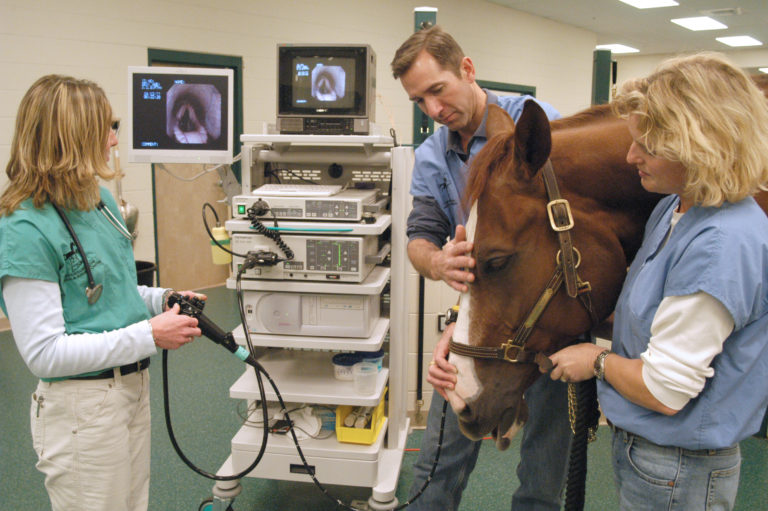
This photo shows Elizabeth Morosani showing her mare Sonrisa TLM. She has known the mare from birth and is sure she’s a little special in her breeding—half Spanish (Andalusian) and half French (Percheron).
Elizabeth wrote that she really liked this canter photo, and she does have a point. This photo expresses how this heavy horse can look like a real athlete. You can see all the power of Sonrisa, and yet she appears to be concentrating on her rider, willing to perform and really bending in her body.
The moment of strike off in canter shows how Sonrisa has to hold all her weight on her outside hind leg and she appears balanced underneath her hip joint.
Looking at her topline, I see that Sonrisa’s shoulders appear a little lower than her croup, even though both front legs are off the ground. This indicates that Elizabeth needs to keep working toward a little more uphill canter, where the horse will not only place weight on the hind legs but bend in her haunches a little more to lift the shoulders and have a more uphill tendency in her body.
To accomplish this, the timing of the weight aids is important: Looking at her seat, I notice that Elizabeth is sitting in a slightly forward position and not sitting deep in the saddle in this phase of the landing. This means that her weight will come down on the horse’s back in the next landing phase together with the horse’s front legs.
If you watch horses cantering, you can easily see the hind legs landing earlier than the front legs. Often the horse pushes the weight of the rider toward the front legs and then the rider is landing with her weight together with the front legs.
Tip: To balance yourself in canter, ride with your reins in the inside hand and hold the cantle of the saddle with your outside hand. With that hand pull yourself deeper into the saddle. This is helpful for feeling the moment when the outside hind leg lands. Then the timing of your weight will come together with the horse’s hind legs and free the shoulders. This will also lighten the horse’s forehand and help her to take more weight onto the hind legs in the strike off of each canter stride.
Back to Elizabeth’s photo, a little more shift of weight onto her horse’s hind legs and some more lightness in the forehand will allow Sonrisa to become more supple in the neck. It will also help her carry her poll a bit higher to allow her nose to come forward.
Elizabeth should work on her body awareness, keeping in mind that her weight aids are always present and can influence the quality of her horse’s movement when she uses the correct timing. Then it will be easier for her to keep her upper body in the vertical line, and her arms and hands will become more independent. Elizabeth needs to be able to keep an elastic contact forward toward Sonrisa’s mouth that allows the mare to lengthen the outside of her neck (necessary for flexing it to the inside), especially on the outside rein.
Sonrisa has a very round back, and it is a challenge to sit on such a wide horse. This often causes the legs to have more outside rotation, as it is easier to spread them further apart while turning them a bit to the outside. Here Elizabeth has to find a compromise between how much she needs to allow some outside rotation while keeping her hips supple. Too much outside rotation may cause her to inadvertently use more spur on the horse than wanted. But the rule should be, “Supple hips are more important than toes pointing forward.”
Elizabeth asked a question in her submission about how to keep from tipping forward in the stretch circle. A rider’s weight tipping forward needs to be rebalanced by the horse. That means if she tips forward, her horse will need to hold her neck up to compensate for the extra weight on the forehand. If the rider keeps her upper body in balance and gives with her hands without tipping forward her horse can stretch more easily. Check your balance when asking for stretching.
It is always special to train and show a horse that you know from birth. I wish Elizabeth and Sonrisa many happy hours of bonding and learning.
Susanne von Dietze is a leader in equestrian biomechanics. A physiotherapist, licensed Trainer A instructor and judge for dressage and show jumping, she gives lectures and seminars throughout the world, including at the prestigious German Riding Academy in Warendorf. She is a native of Germany and now lives with her husband and three children in Israel, where she competes at the international level. She is the author of two books on the biomechanics of riding: Balance in Movement and Horse and Rider, Back to Back. Find her books at HorseBooksEtc.com.











